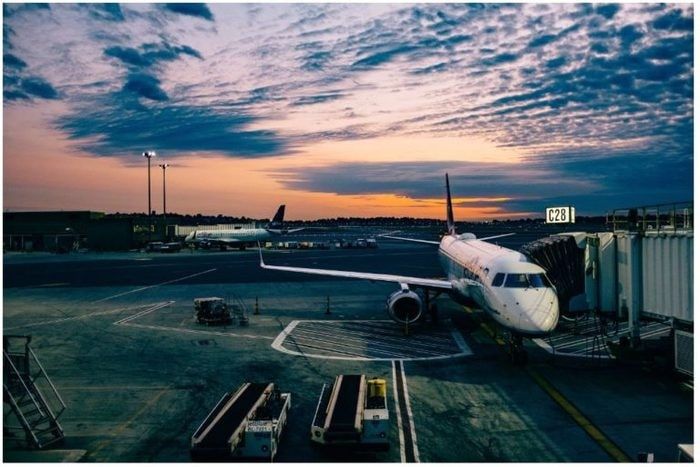Wings for the aviation sector in Latin America
Despite positive expectations, the region faces some important challenges: commercial aviation policies in Latin American and Caribbean countries are still restrictive.

Despite positive expectations, the region faces some important challenges: commercial aviation policies in Latin American and Caribbean countries are still restrictive; airport infrastructure in the countries of the region is inadequate to meet demand; air transport does not fully comply with international safety and operational safety standards of the International Civil Aviation Organization (ICAO).
The history of aviation in Latin America is as old as the history of aviation itself. Since the successful flight of the Brazilian Alberto Santos Dumont in Paris on his 14-bis in 1906, Latin America had its first flight in 1910, by Dimitri Sensaud de Lavaud, in Brazil, followed by other experimental flights, such as those made in Mexico (Alberto Braniff) the same year, and in Colombia (the Canadian John Smith) in 1912. In 1946, Iberia made the first regular commercial flight to Latin America from Europe, in its flight Madrid-Buenos Aires, with three stopovers, in 36 hours.
More than a hundred years later, Latin America and the Caribbean carry more than 400 million passengers a year, with a projected growth of 4.7% for the next ten years.
Challenges facing the air sector in the region
Despite positive expectations, the region faces some important challenges: commercial aviation policies in Latin American and Caribbean countries are still restrictive; airport infrastructure in the countries of the region is inadequate to meet demand; air transport does not fully comply with international safety and operational safety standards of the International Civil Aviation Organization (ICAO).
How has the IDB supported countries in facing these challenges?
The Inter-American Development Bank pledged to support the countries of the region in closing the gaps needed for more efficient, safe, and resilient air transport through various instruments. To this end, the IDB has launched its conceptual framework for intervention, which highlights the main activities and projects in the region and defines the objectives and mode of intervention for the coming years. In addition, the IDB has launched a series of publications aimed at deepening the diagnosis of the region and evaluating the best policies for the sector.
How is Mesoamerica doing in the aviation sector and what are the tasks of the sub-region?
The Diagnosis of Air Transport in Mesoamerica launches interesting perspectives for the air sector in the sub-region. Mesoamerica[1] has transported around 150 million passengers, with an expected annual growth of 5.8% over the next 20 years.
The publication presents interesting facts: U.S. companies. have a strong presence in the international market of Mesoamerica with 35% of the supply; the thirty main airports represent 87% of the passenger traffic of a total of 108 primary airports in the sub-region and 80% of the traffic passes through airports of ten private operators under concession; the countries of Mesoamerica are well integrated with the United States, thanks to the Open Skies agreements, but little integrated intra-regionally (more restrictive air freedoms agreements between them); the investment needs in air infrastructure in Mesoamerica between 2015-2025 exceed 16. billion dollars, to meet the projected growth in air traffic.
The publication also identified the main tasks that Mesoamerica should prioritize in the air sector: to develop the air market through increased competition and market opening for regional integration; to promote public-private partnerships (PPPs) for its airports and other innovative schemes for the maintenance of airport infrastructure; to develop regional and local airports, following international standards; to modernize its air navigation system.
How to evaluate policy reforms in the aviation sector?
In addition, the IDB disseminates good practices in aviation policies through rigorous evaluation of these policies. For example, the publication Regulatory Impact Analysis of Brazil's Air Services Agreements seeks to evaluate the impact of more liberal air services agreements between Brazil and the United States and Chile, comparing them with more restrictive agreements, such as those signed between Brazil and Argentina and Portugal.
The following evolution of the Brazilian international passenger market was observed: the Brazilian air market with the United States and Chile grew 106.2% and 54.7% (2008-2014), respectively, while the market with Argentina and Portugal grew by no more than 30%; there was an increase in the connectivity of Brazilian international air transport (from 11 airports with international flights in 2000 to 15 in 2014); the number of airlines operating in Brazil grew in the period 2000-2014 (from 35 to 46, serving 34 countries as a whole).
Based on this diagnosis, the authors performed an econometric multiple regression model (gravitational model) to analyze the impact of regulatory changes on the number of passengers transported internationally in Brazil. The study concludes that the 10% reduction in the air restriction index in Brazil's agreements with the United States and Chile led to a 2.1% increase in the volume of international passengers between these countries and Brazil. It is also expected that a reduction of Brazil's current air restriction rate by 40% may cause an increase in the country's international passenger air traffic of about 8.4%.
Diagnose, plan and evaluate
The IDB's form of intervention in the aviation sector follows a methodology of diagnosing the main challenges countries face in planning our interventions, defining the objectives, activities, and our strategic partners (such as, for example, the Mesoamerica Diagnostic); planning our interventions, by defining the objectives and main activities to be implemented (Air Sector Conceptual Framework); and rigorously evaluating policy reforms in the aviation sector (Regulatory Impact Analysis in Brazil).
[1] The study considered Mexico, Belize, Guatemala, El Salvador, Nicaragua, Costa Rica, Panama, Colombia, and the Dominican Republic as Mesoamerica.
Source: Iadb.org




